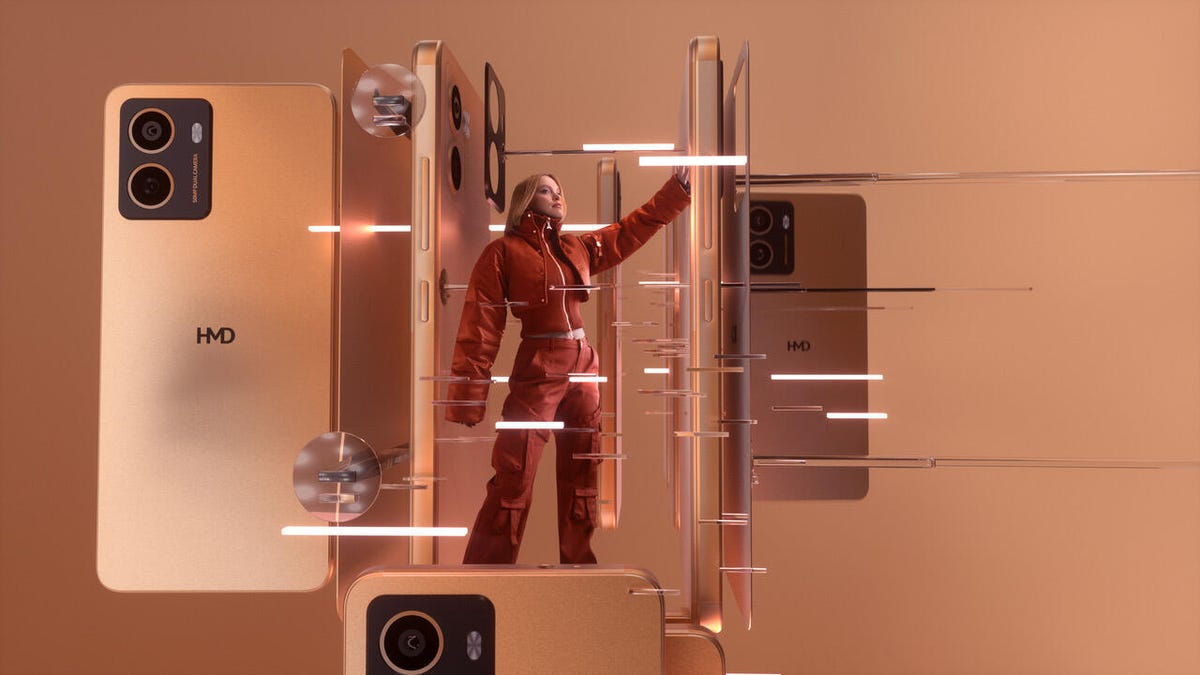Would you be more likely to buy a phone if you knew that you’d be able to repair it at home if you smashed the screen? Finland-based phone maker HMD is hoping you will, as it unveils its first own-brand phone series designed around the concept of repairability.
HMD is best known for making Nokia phones — both the smart and dumb varieties — but now its branching out by making phones with its own name stamped on the back. On Wednesday it unveiled its first three own-brand devices, the HMD Pulse, Pulse Pro and Pulse Plus. The Pulse, priced at $124 ( 100), and the Pulse Plus, priced at $162 ( 130) are available to purchase immediately, whereas the Pulse Pro is currently listed as “coming soon.”
The most exciting of the three devices is the HMD Pulse Pro, which has 50-megapixel cameras on both the back and front, meaning that your selfies will be the same quality as the photos you take with the main camera. The three phones also share many features and attributes, including a Unisoc T606 processor and a focus on affordability and repairability. With all three devices, you can replace a damaged display, bent charging port, or a depleted battery in just a few minutes using simple tools.
The ability to repair your own device at home is an increasingly desirable feature in new tech hitting the market. Extending the life of products means you need to shell out less frequently to replace tech that otherwise would be discarded, which in turns reduces e-waste and causes less harm to the environment. It’s a win-win for consumers and for the planet.
Some tech companies, including Apple and Samsung, run their own repairs programs, but there’s a growing movement to allow people to repair their own devices. Online community, advocacy group and parts retailer iFixit has been a staunch advocate of the right to repair movement, and over the past few years has started partnering with tech companies, including HMD, to allow people to buy affordable repair kits specific to their tech.
“HMD’s ongoing commitment to designing phones with repairability in mind is an encouraging shift in our throwaway culture, proving that HMD has the innovative culture needed to drive advances in repairability,” said iFixit CEO Kyle Wiens in a statement. “We’re keen to collaborate as they work towards making repairable phones the norm, not the exception.”

In 2023, one in every four phones HMD sold was repairable. This year, the company is aiming to make that three in every four. For the HMD Pulse, Pulse Pro and Pulse Plus, owners will be able to buy a self-repair kit and spare parts from iFixit starting at $22 ( 18). It’s a continuation of the partnership between the two companies that’s also seen repair kits available for HMD’s Nokia smartphones.
The big difference between HMD’s own-brand phones and its Nokia devices seems to be in the design. The Pulse phones are more angular and feature a more pronounced camera module. They also come in a range of fun but muted colors, including “Twilight Purple.”
“There is an audience who would buy whatever phone just because it’s repairable,” HMD’s CMO Lars Silberbauer told me in February this year when I spoke to him at MWC in Barcelona and the company first announced it would be making its own phones. “But if you want to reach the masses, then you need to have something that’s also desirable.”
The Pulse series is HMD’s first attempt at creating a desirable and repairable phone that will attract an emerging, Gen Z audience as it begins its journey as a fledgling phone brand. It’s a crowded market, but being a step ahead where it comes to repairability might just give HMD a competitive edge.
